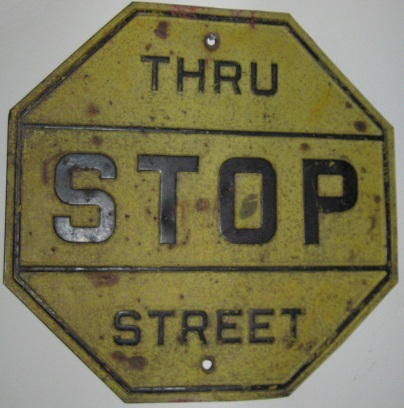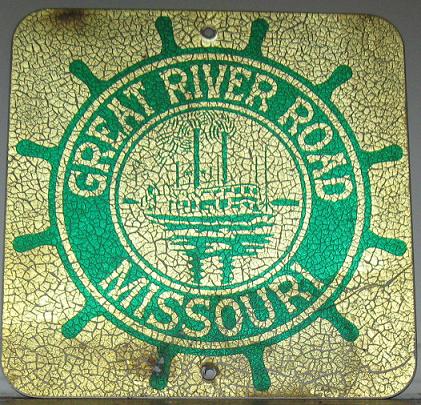Alps' Roads - My Signs - Guide/Regulatory
My Guide and Regulatory Signs



These signs do not appear on any of my other pages because I have not the faintest clue what state they could come from. The first one is wooden and uses a lettering style that makes me fairly certain it's not a state-issue (or state-spec) sign. The others are embossed.


I think the first curve is from Kansas. It was my first embossed sign and certainly the rustiest, so I upgraded it to the other one seen here. Now, I have absolutely no idea where it comes from, but besides being embossed, it has silver Scotchlite embedded inside the curve. This dates to the 1950's when states first started experimenting with reflective material, and the only technology at the time was moderately reflective silver that would shine back nearly white.






Embossed street signs from Livingston, NJ. These were sold in a town auction when Livingston replaced its signs with flat reflective street signs in mixed case to be compliant with the MUTCD. Most of these are from my Livingston page, but Eisenhower Parkway has its own page.
 Speaking of embossed, this is the alternate style that was phased out in favor of standardizing the common arrow.
Speaking of embossed, this is the alternate style that was phased out in favor of standardizing the common arrow.

From one way to both ways, this much older hexagonal arrows dates from the earliest days of route signing in the 1920s. I guess it's just less material than a rectangle, because the hexagon doesn't otherwise convey any benefits. There's a similar one that, at least into the 2000s, was posted on US 40/NJ 50 in Mays Landing. Just maybe this is also a New Jerseyan arrow.

This European-style ceramic regulatory sign is from somewhere in the Caribbean. It's ceramic (on steel) and therefore quite old.

The Great River Road entered many states along the Mississippi River. This Missouri shield is notable for using the older font and being only 18"x18". Those facts and the peeling paint date it to the 1950's or 1960's.

The AAA signs erected in California are the most famous motor club signs, but many clubs across the country chipped in to get early highways signed when state signage was lacking. In this case, the word "lacking" is appropriate for the Lackawanna Motor Club of Pennsylvania. Sorry. Anyway, to buy a AAA sign in even this condition would cost hundreds of dollars, so I'll settle for an enamel specimen you probably will not find anywhere else.

Another unique sign in my collection, it combines a route marker with a direction (turn right just ahead). This started with highways in the 1920's, back when signs were embossed, and probably died out in the 1940's at the latest. The sign is enameled steel.

The blasting sign got blasted in the middle by a bullet - good aim! I don't recognize the font; it dates to before the FHWA standardized sign fonts nationally, so it should match up well with no more than a few states, if only I were familiar with them all.


Acquired right around the same time, these two signs are a perfect pair. One is wood, one is mounted on wood. One's from New Hampshire, the other from Maine. One points to the left, the other points to the right. The one that points to the right is much cooler for a few reasons: It dates to the 19th century, the distance is abbreviated as 10M for miles, the letters are individually nailed on (which is how the O disappeared), and, most importantly of all, the direction is indicated by a disembodied hand. It just doesn't get cooler than that.
See my route shields
Back to my sign collection main page
Back to Roads










 Speaking of embossed, this is the alternate style that was phased out in favor of standardizing the common arrow.
Speaking of embossed, this is the alternate style that was phased out in favor of standardizing the common arrow.






